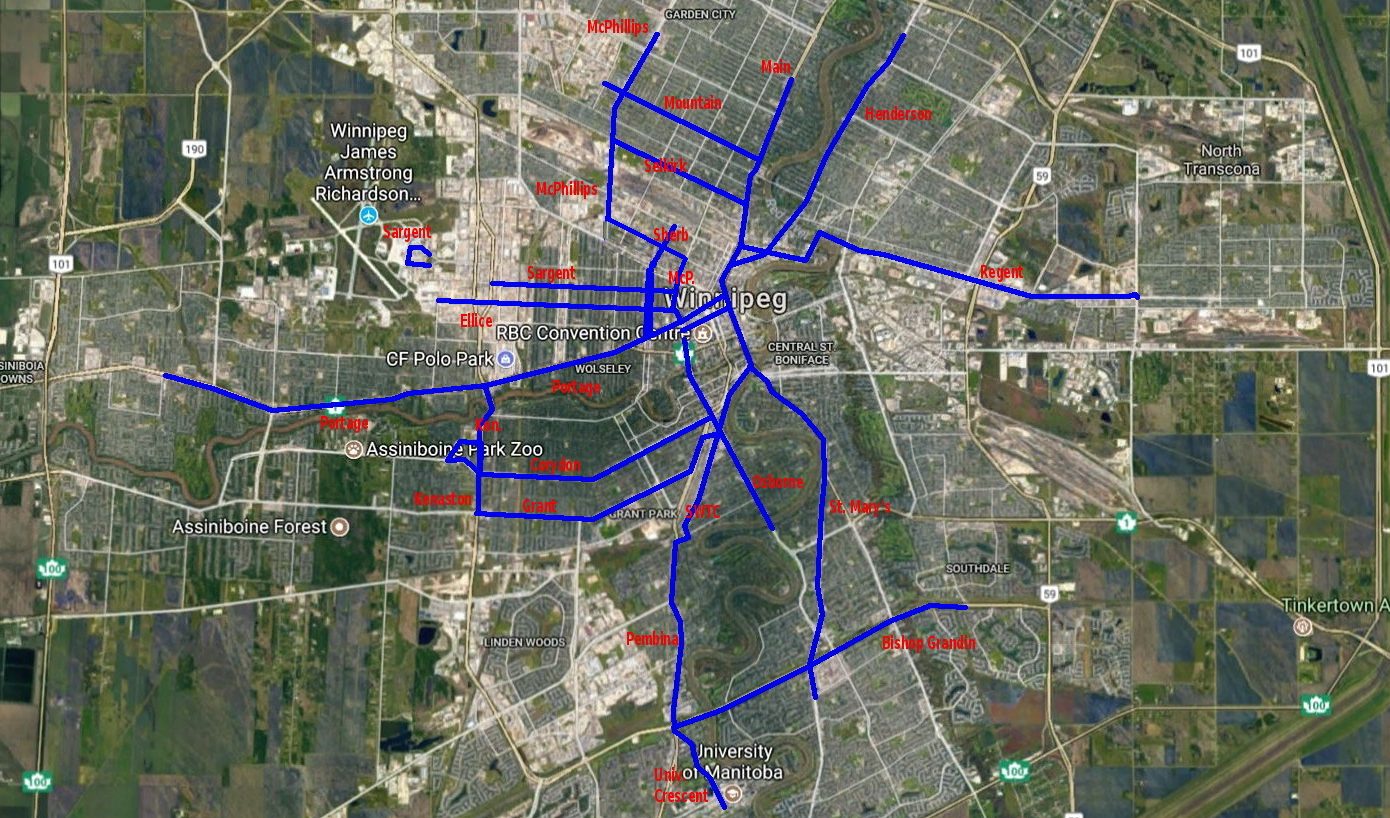After the City of Winnipeg passed a motion to look at implementing a frequent service network in Winnipeg, we began to ask ourselves: how close are we to a frequent service network right now? Typically, the maximum frequent service headway – the time between buses – is defined as 15 minutes or less. A basic frequent service network would operate several connecting routes with daytime headways of less than 15 minutes. Such a network should operate throughout the whole year.
Functional Transit member, David Wyatt, ran the numbers and produced a list of bus headways on the most important bus routes in Winnipeg. He found that while some routes are very close, not a single route in Winnipeg during the summer consistently provides 15 minute service throughout the day. What follows are some comments from David about the project. You can view the map and headways by clicking here.
This was an interesting exercise.
I’ve been through the July schedules on some of the most important transit routes in Winnipeg and built a graphical presentation of the headways across the weekday. I have used red for high frequency, blue for medium frequency, and green for low frequency.
I’ve broken two corridors into segments (Portage Avenue and Southwest Transitway/Pembina/
I used a fairly basic definition of “frequent”: Two-way service where there are no gaps between buses greater than 15 minutes, between 07:00 and 18:00 weekdays
There are surprisingly zero routes that qualify (although there are four that come close (Portage Avenue, Main Street, Henderson Highway, and Southwest Transitway [Phase I]).
I think what surprises me the most is the irregular scheduling. On corridors with multi-route overlapping service you expect (in Winnipeg) irregular resulting headways but even on routes that are served by only one route, the headways are often very irregular.
Frequent service network – how close are we right now?

